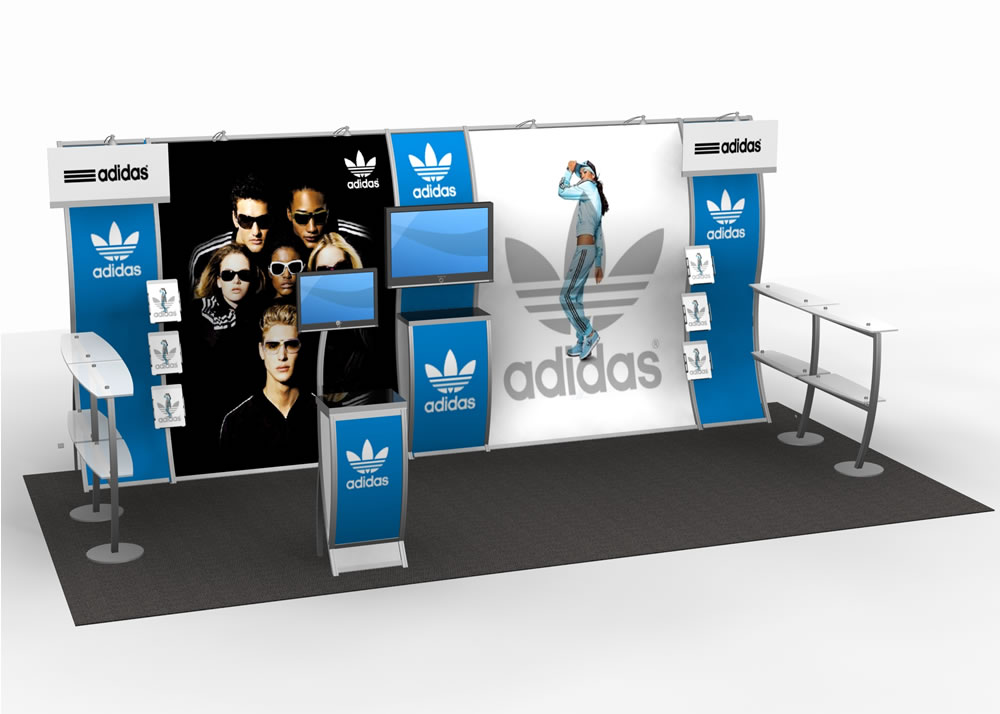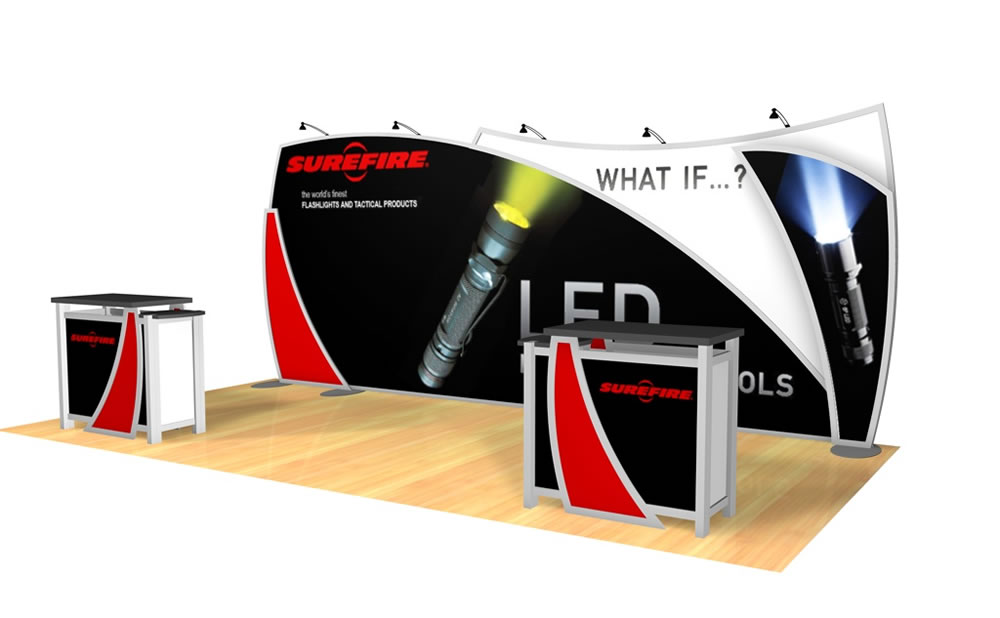Exhibit Design Search / Trade Show and Event Tips / Become an Exhibit Marketing Expert /
What's the Real Cost of Your Exhibit and Trade Show?
 Exhibit Budgeting Tips
Exhibit Budgeting Tips
- How to differentiate between normal marketing expenses and exhibit marketing expenses
- The exhibit is the largest initial expense, but your ongoing exhibit marketing will easily surpass that initial cost
- Create a budget and maintain an accurate Return on Investment (ROI) on your exhibit marketing
- Include the Exhibit Costs, Onsite Expenses, and Show Services when developing your budget
An Accurate Exhibit Budget
Companies should define a workable exhibit marketing budget, one that includes all related costs. However, the line between marketing expenses and exhibit marketing expenses can be somewhat fuzzy. You will want to create a well-defined budget that separates them.
The exhibit is typically the largest initial expense. However, over time, the cost of using the exhibit will easily surpass the initial cost of the exhibit, often significantly. When constructing a budget, evaluate your ability to maintain the expense year after year. Weigh the repercussions of scaling back. In some industries, scaling back can be more damaging than never exhibiting in the first place.
Creating an Exhibit Budget
Creating a budget allows you to figure an accurate ROI. You should account for pre- and post-show marketing, travel costs, lodging, and entertainment. You’ll need to factor in freight, drayage, show labor, carpeting, and electricity expenses. These can be significant expenses. Most I&D companies will estimate the labor time from a faxed set-up drawing. Most freight companies can estimate the shipping charges based on dimensions and weight provided by the exhibit seller. You should also factor in minor repairs due to freight damage or repeated set-up. Generally, common sense will determine if the exhibit packing is sufficiently for repetitive use, the vibration of the road, and the pounding of the forklift during freight handling.
Don’t forget to factor in the usable life of your exhibit and assign a cost to each show. On average, an exhibit is effective for three years. Any longer and the exhibit may be dated or worn. Any earlier and the marketing value is not realized.
Here is an example to consider: a buyer who participates in six shows per year is considering two 20 x 20 island designs that cost the same. The first exhibit might weight 50% less than the second, saving freight and drayage costs; however, the second might setup in half the time of the first, saving labor costs. Additionally, the second might be crated better, yielding a 20% longer life or at least a higher resale value. You’ll want to consider all these expenses before making a final decision. Your exhibit consultant can assist you with calculating your estimated expenses for each show.
Calculating Your Budget
Consider the following when developing your budget for Exhibit Costs, Onsite Expenses, and Show Services. Onsite Expenses and Show Services can be calculated using the forms provide by the show management organizer. Those rates vary depending on the show. This list does not include travel, meals, lodging, or promotional incentive expenses, nor does it include normal payroll expenses.
- Exhibit Price
- Total Number of Uses
- Weight/Packaging
Onsite Expenses
- Booth Space
- Lead Machine Rental
- Furniture and Plants
- A/V Equipment
- Flooring
Show Services
- Drayage (moving your exhibit from the dock to your booth space)
- Electricity/Electrician
- Internet/Telephone
- Decorator
- Labor for I&D (installation and dismantling)
- Booth Cleaning
- Booth Security
Creating a well-defined budget and comparing it against actual expenses is the best method to track and manage your total investment in a particular show. If you sell products in a retail show, then the revenue is easy to tally up and compare to the expenses for the ROI. If your show is one where prospecting, branding, and market positioning are the norm, then the ROI is more difficult to measure. Other benefits are difficult to measure but quite valuable just the same. These intangible benefits may be direct or indirect, and exhibit marketers look for subtle hints of these returns and weigh them against the opportunity cost of not exhibiting.
Contact Us
For more information about trade show or event marketing, give us a call or Contact Us. We welcome the opportunity to assist you with your next event.
Mel White, CEI
